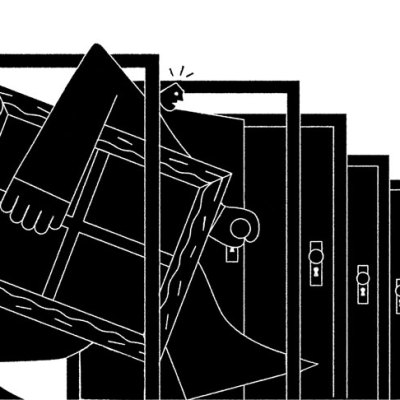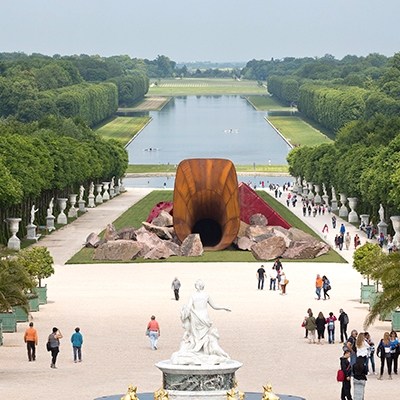Privacy has long been of utmost importance in the art world. But in the context of the recent global move towards transparency in business and finance, the art market has increasingly been the subject of criticism for its perceived opacity. A great deal of publicity has been generated by exceptional cases in which criminal investigations have been launched against people alleged to have laundered money through art transactions: take, for example, an embezzlement case being investigated by the US Department of Justice in which Christie’s appears to have been used by the Malaysian sovereign wealth fund 1MDB to purchase art worth millions of dollars.
However, most collectors, dealers and galleries wish to preserve their privacy not because their behaviour is untoward, but because individuals’ collections are personal and part of their private affairs. Sometimes collectors are compelled to sell artworks due to financial problems that they wish to keep secret; in other cases, privacy can add to the allure of artworks that have been held in an exclusive collection. Obviously, businesses operating in the art market always need to remain vigilant, and be mindful that they do not become vehicles to facilitate money laundering or any other criminal or fraudulent activity; it is only if they are vigilant from within, by keeping strict checks and balances in place and reporting anything that looks wrong, that the market may be able to maintain and preserve the level of privacy at which it often prefers to operate.
Art-related disputes between collectors and dealers, or between buyers and sellers and/or auction houses arise all the time. Such parties often find themselves the subject of court proceedings that are entirely public, and often include the details of private affairs and finances relating to the dispute. The threat of publicity can be such that parties with good claims may abandon them without recompense because they simply do not wish to go through with court proceedings.
If the dispute relates to the authenticity of an artwork, court proceedings can have disastrous implications for that work’s value: where authenticity has been called into question, however weak the arguments, any future prospective buyer is bound to hesitate, and certainly not offer the price they might have done prior to public court hearings. There are often cases in which this occurs. In one recent example, the buyer of a sculpture has issued proceedings against the dealer who sold it for misrepresentation in the catalogue, calling into question the authenticity of the sculpture. Whatever the result of those proceedings, there is now a black mark against that item which is likely to affect its value in the future.
Arbitration, particularly in London (which has a well-developed arbitration jurisdiction), can provide a suitable forum for resolving art disputes in private. Importantly, at this point it is also a good way to make sure that any decision granted can be enforced in most countries around the world, irrespective of the result of Brexit negotiations – which, until there is greater clarity in the negotiations, cannot be said of cases heard in the British courts in respect of other countries in the EU.
In arbitration, disputes are resolved with binding effect by a person or persons acting in a judicial manner in private, rather than by a national court of law that would have jurisdiction unless the parties have prior agreement to exclude it. It requires a decision by the parties, at the time of making their agreement, to take any dispute outside of the court system and have it settled in private by an arbitrator jointly funded by the parties. Such an arbitrator, usually an experienced lawyer, would have the role of a judge, and their decision would be entirely binding and enforceable in most countries under the New York Convention on Recognition and Enforcement of Foreign Arbitral Awards (1958).
If the parties specify an arbitration institution such as the London Court of Inter-national Arbitration (‘LCIA’) to administer the process, the rules of that institution would be incorporated. It is difficult to appeal against arbitration awards, with appeals on points of law being excluded. Parties achieve confidentiality between themselves and the arbitrator, flexibility in the manner in which the proceedings are conducted, and finality – although the approach to confidentiality varies slightly between different countries and arbitration institutions, so it is advisable to check this before selecting which one to use. The International Chamber of Commerce (ICC) in Paris, for example, which is one of the most established and popular arbitration institutions, requires parties to request that confidentiality be included in orders made by the arbitrator(s), and publishes anonymised extracts from a small minority of awards; the LCIA includes confidentiality provisions in its rules, so parties do not need to request it from the arbitrators, and it does not publish awards. In agreements in which there are parties based in different countries, arbitration provides a neutral venue; most western countries have developed arbitration laws and competent, well-respected institutions to administer their arbitrations.
Professionals in the art world increasingly prefer to put paperwork in place rather than operating, as in the past, on the basis of handshake agreements. Consignment agreements, sale terms and conditions, artist agreements, loan arrangements using art as collateral, and financing agreements to enable art purchases are becoming more commonplace, and it is such documents that could include clauses to send disputes to arbitration rather than court litigation. There is consumer legislation which might have to be taken into account – and where relevant, would require any disputes to be heard in court – but most contracts in the art world would be eligible for arbitration clauses.
To take the infamous dispute between the collector Dmitry Rybolovlev and his former art adviser Yves Bouvier as an example, this commenced in 2015, with proceedings issued or threatened in a number of countries, including Hong Kong, Singapore and Switzerland and, most recently, London. The arguments between the parties appear to be centred, even after two years, on which court should hear the dispute rather than on the dispute itself. If the parties had recorded an agreement for any dispute to be resolved by arbitration then it may have been settled by now, because all the arguments about the venue for the lawsuit to be heard could have been avoided. (It is worth noting, however, that the negative publicity that can be generated by court proceedings may play a part in parties’ decisions not to include arbitration clauses in their original agreements, given the pressure it would put on parties to settle.)
Finally, amid the uncertainty following Britain’s decision to leave the EU, and given that art travels relatively easily, the fact that arbitration awards are treated in most countries as judgements of their own courts ought to convince many in the art world to take disputes to arbitration. At present it is unclear whether judgements made in the English courts will be enforceable in other EU countries, as arbitration awards are, after Brexit. In London, there have already been quite a few art arbitrations, and there are a number of barristers and solicitors who are eminently capable of performing the role of arbitrator. Other sectors, such as commodities, insurance and shipping, are almost entirely reliant on arbitration for their dispute resolution. It is time for the art world to join in.



